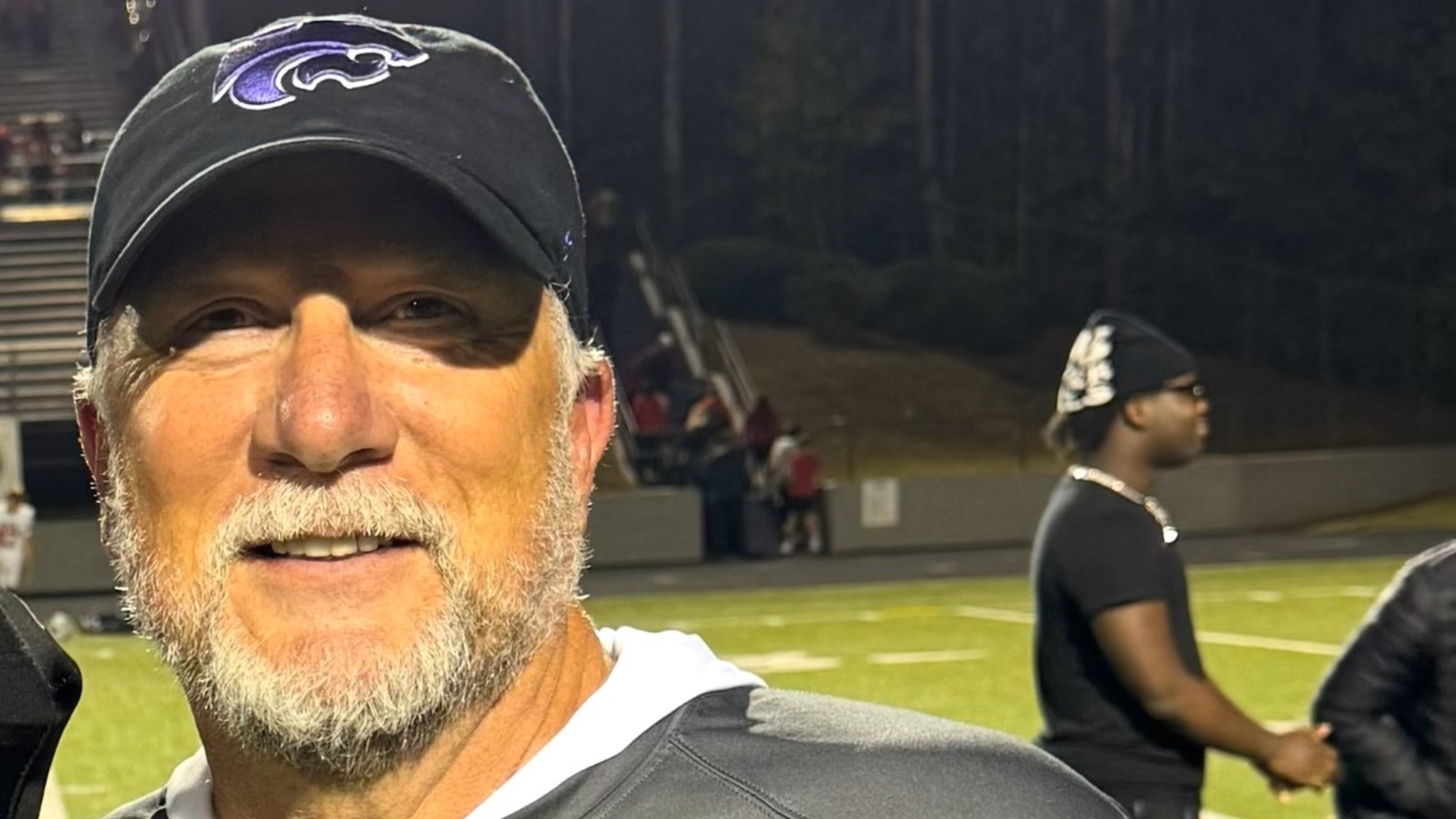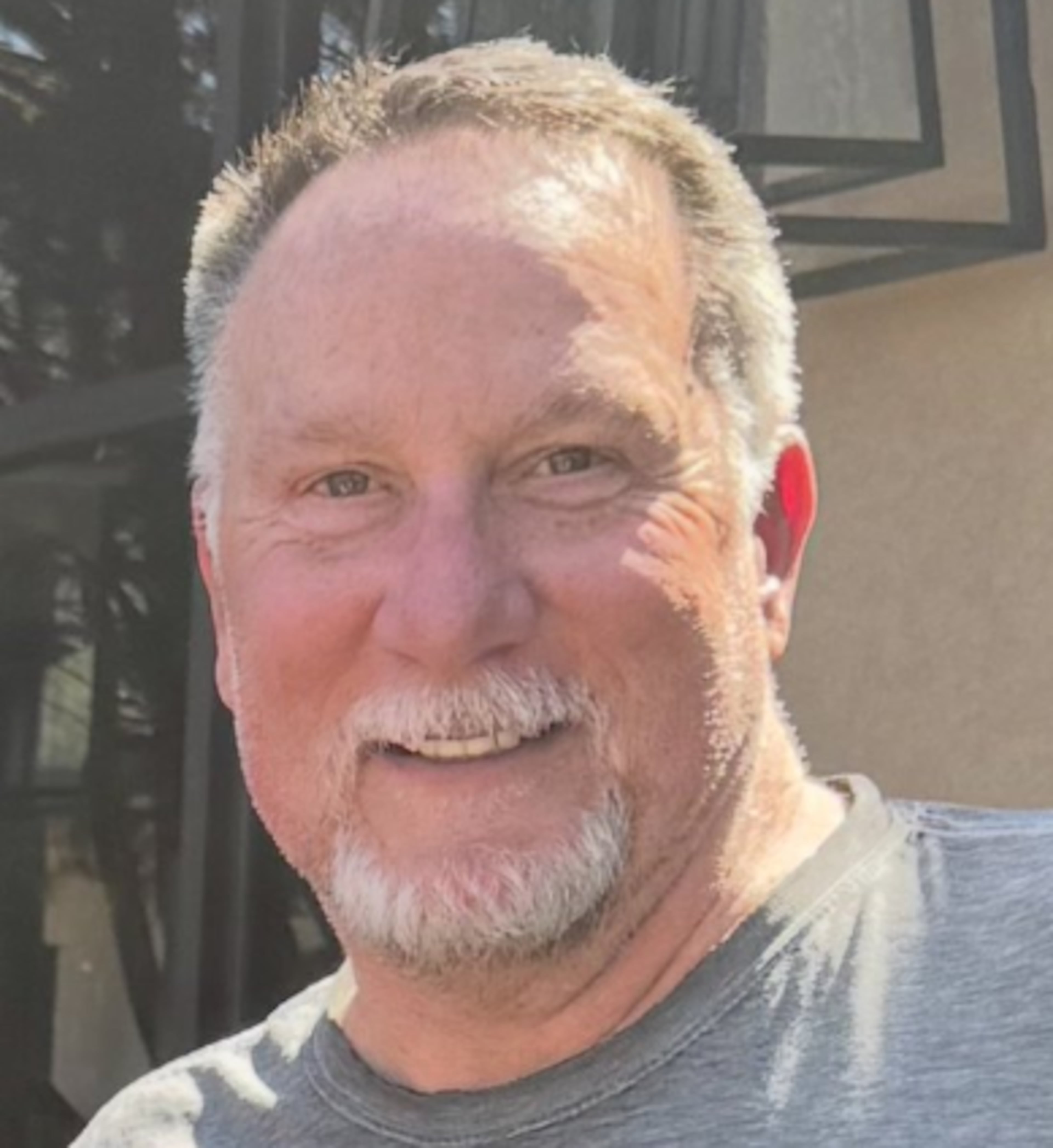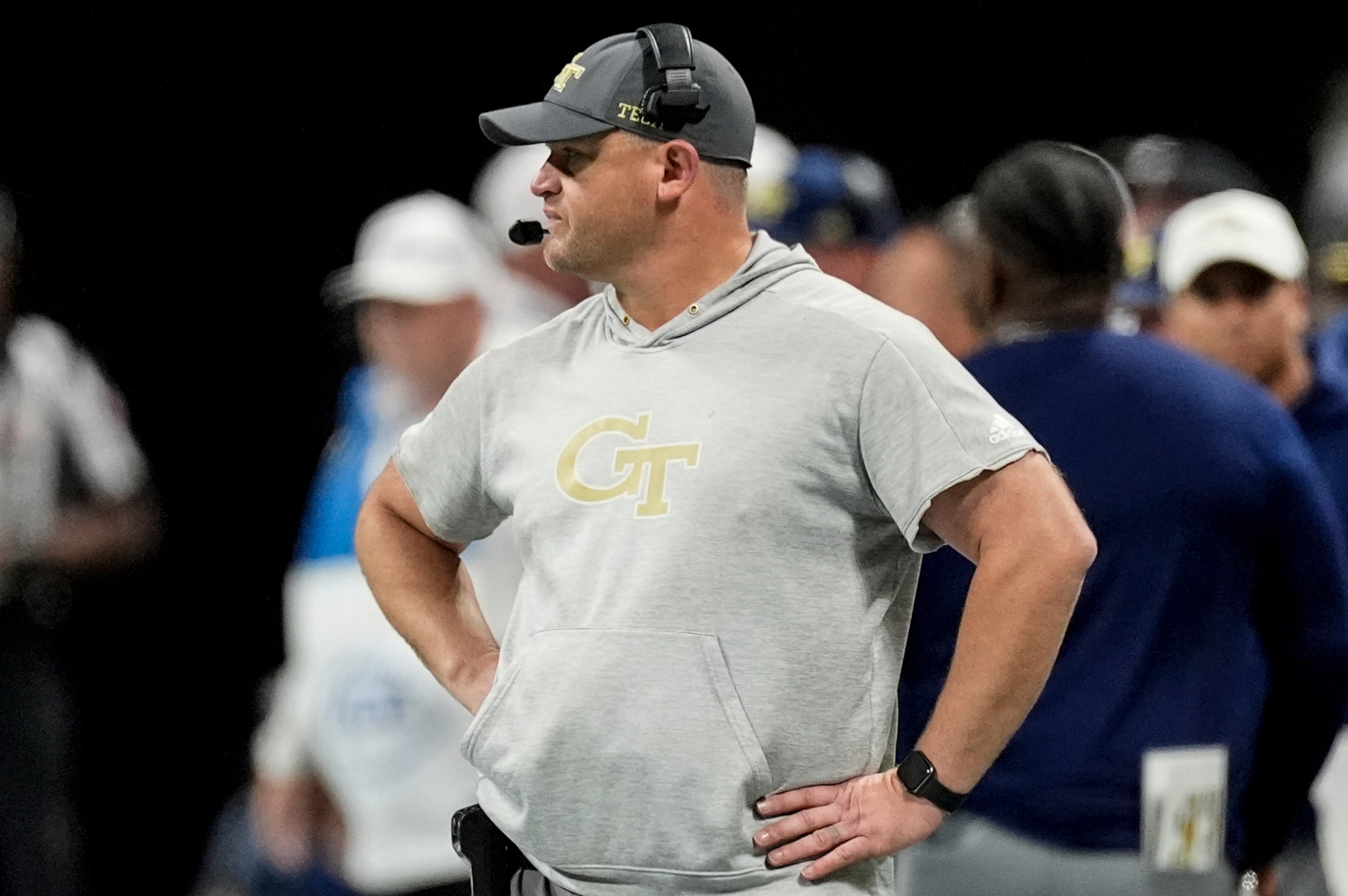On 29-game losing streak, Apalachee football introduces key tools to rebuild

The term program builder can be thrown around loosely and given to just about any coach who has rebuilt a football program or two.
With 40 years of coaching experience, Apalachee’s new coach, Kevin Saunders, is the epitome of a program builder — and it’s not a coincidence that he finds himself taking over programs that some others wouldn’t touch.
He has thrived at those jobs in Virginia, Tennessee, Kentucky and most recently Georgia.
“One of the things that always intrigued me was everybody always saying, ‘You can’t win there,’” Saunders said. “Well, that’s the job I want.”
Now, Saunders is facing one of the bigger rebuilds of his career. He was named Apalachee’s coach in late March, inheriting a program on a 29-game losing streak, winless since 2021.
It’s not just the record, though. This time, there might be as much to rebuild off the field as on the field. In September 2024, a school shooting took the lives of two students and two educators. Among them was Richard “Ricky” Aspinwall, the football team’s defensive coordinator.
Apalachee canceled two games and postponed another while the school and community healed. The football program slowly got back on its feet and played its final five games.
One thing Saunders is doing for the first time as a head coach is employing a sports psychologist.
“I will do whatever I can to figure out (how) to make this team better. That’s my job,” Saunders said. “He comes highly recommended. He’s been in the service. He’s dealt with the Navy SEALs. He’s dealt with pro athletes. He’s dealt with college athletes. He’s dealt with high school athletes. So, he can relate to these guys in a lot of ways.”
Saunders learned Cedartown and Carrollton were using sports psychologists and said he planned to make that hire at his next head coaching stop, regardless of the school.
At Pebblebrook, Saunders had a counselor who talked with the team about mental health, but he wasn’t a sports psychologist. Player feedback made it clear that one-on-one sessions were what the players wanted.
Having a sports psychologist made even more sense at Apalachee. The job opened because the previous coach, Mike Hancock, stepped down in March, saying he was seeking counseling to deal with grief and depression.
Saunders said Apalachee’s players will be able to seek the psychologist’s help with issues on or off the field that affect their performance. He believes in improving his athletes’ mental health and that there are certain things that other people, outside of the program, can do to benefit the students better than he can.
“Those are things we’ve got to do as coaches,” Saunders said. “So, I’ve got to get the best people in here to help us get that way. I used to think that I could get kids focused, but I truly believe, nowadays, I need to get somebody — that’s their job and that’s how they do it — and he will have data to back it up.”

Saunders brought in many new coaches and retained one from the previous regime.
The new staff includes defensive line coach Antwan Lake (played for the Falcons, Saints and Lions); wide receiver coach George Murray II (former Cincinnati Bearcats wide receiver and Arena Football League player); offensive line coach John Cano (former All-American at Reinhardt); offensive coordinator Will Hardesty (previously at Forsyth Central); defensive coordinator Chuck Kenyon (previously head coach at Royal Palms in Florida); running backs coach Kyle Hutchinson; and the lone returning coach, Joc Pledger (All-American at Brevard College).
“These guys are top-notch coaches,” Saunders said. “I got some NFL guys that got some experience, got some college guys that got some experience. Got some young guys that don’t have experience that will do a good job because they’ve played it. That’s going to be good because they’re going to bring a lot of enthusiasm to what we’ve got going here.”
On the field, Apalachee resembles many of the teams that Saunders has coached before.
Saunders started his career as one of the younger head coaches in Virginia at age 24 in the 1980s. He later took over a William Campbell High team that had won four games in four seasons. Saunders led Campbell to the Class 2A semifinals in back-to-back years.
He also coached at J.J. Kelly, another Virginia school that had won only four games in four years. Under Saunders, Kelly made a school-record four consecutive playoff appearances. He won a 2011 state title at Gretna, a program that already had a good tradition.
In Georgia, Gilmer had lost 31 consecutive games when he took the job there in 2019. The Bobcats won seven games in Saunders’ two seasons.
Pebblebrook improved drastically in one year with Saunders, going 4-6 after winning only five total games in the three years before. He also took the Falcons to the playoffs, something that had not been done there in almost a decade.
Apalachee is the latest big venture.
“They know that these seniors have never won a high school football game,” Saunders said. “They know that. Nobody needs to tell them. I don’t need to tell them, ‘If you practice like that, you’re going to lose again.’ Trust me, they know that stuff.”
Having completed so many rebuilds, one might think they are all the same. Saunders says he must approach each differently because there can be things below the surface that aren’t visible. But one thing he is adamant about is not talking about changing the culture.
“The majority of times when you go in places, everybody talks about culture,” Saunders said. “I think that is the most overrated word in the coaching profession ever.”
Culture, for Saunders, is too general a term to use in complex situations. For him, it’s all about setting the standard.
“Tell me what it is,” Saunders said. “My thing is, usually the standards are bad.”
Saunders believes that if you set excellent standards that players must achieve at all times, the team will improve to that standard. For him, it always starts in the weight room.
“The weight room is going to be the key to the whole thing,” Saunders said. “I’m big about what we do in the weight room. We’re going to change the mentality to that.”
Next on the list of things to do is to improve how the players practice.
“We’re going to practice at a different tempo,” Saunders continued. “We’re going to practice with a different intensity. We’re going to practice at a different physicality.”
These might sound like cliches used by every coach taking a new job ever. Still, for struggling programs that have not been very successful — which Saunders always finds himself leading — these insufficiencies show up more in the margins daily. This year, during spring practices, he began implementing those standards.
“It was very intense,” Saunders said. “It was different contact drills. It was different tackling circuits. It was a lot of different things that they had to go through, and it was new to them. Things that they really haven’t done in the past.”
His last universal standard he shared involved looking back at the past, or the lack thereof.
“I cut the team that was here before,” Saunders said.
He doesn’t mean the players were removed from the team. Instead, he cuts ties with the memories associated with failure and doesn’t like to use someone else’s wins and losses to help determine his expectations for his team.
“Each team is different,” Saunders said. “I tell them we’ve got the same record as (state powers) Gainesville, Grayson and Mill Creek. We’re all the same right now. Nobody is any different.”
Saunders has a plan, that is evident. That, and his record of rebuilds, is why he was named head coach among the over 50 applicants who applied for the job.
“My thing is, I’ve got a job to do,” Saunders said. “My job is to help these young people become better people. I want to improve them as a person mentally, physically, socially and emotionally. I want to improve on that with each kid. If you do that, you’re going to get a better football team.”

